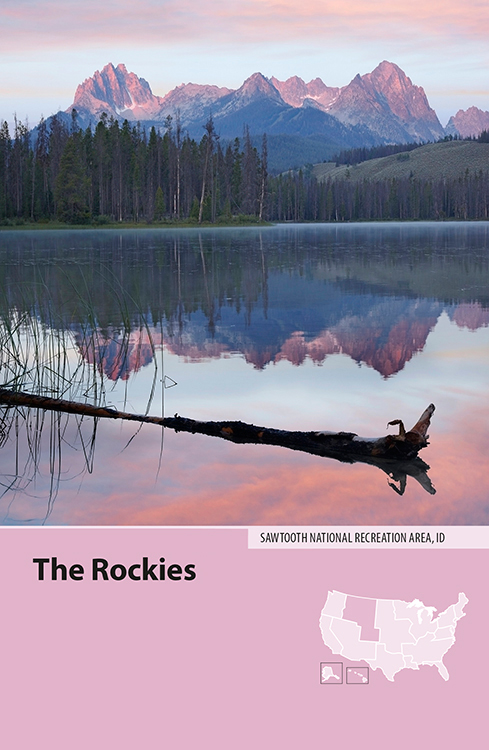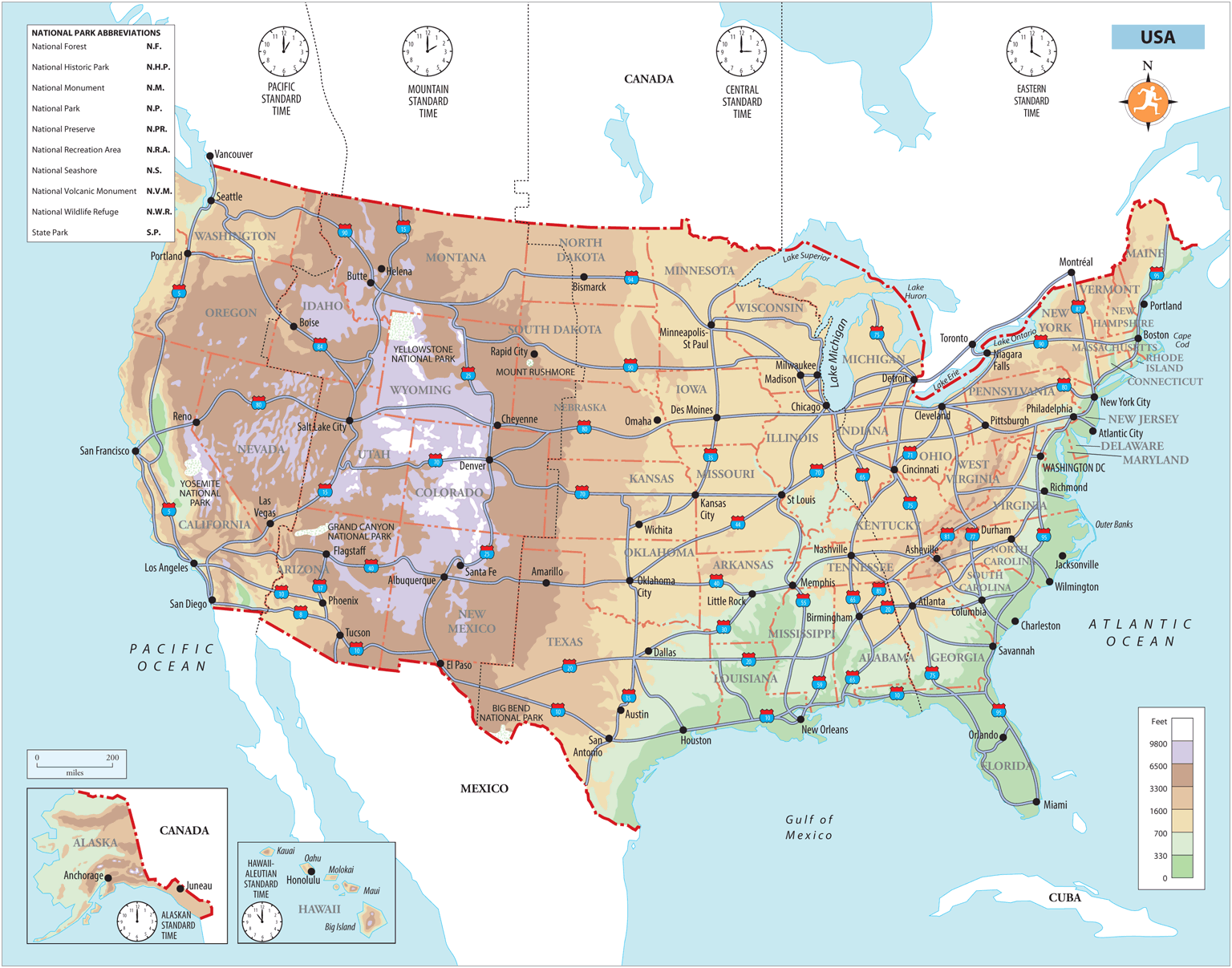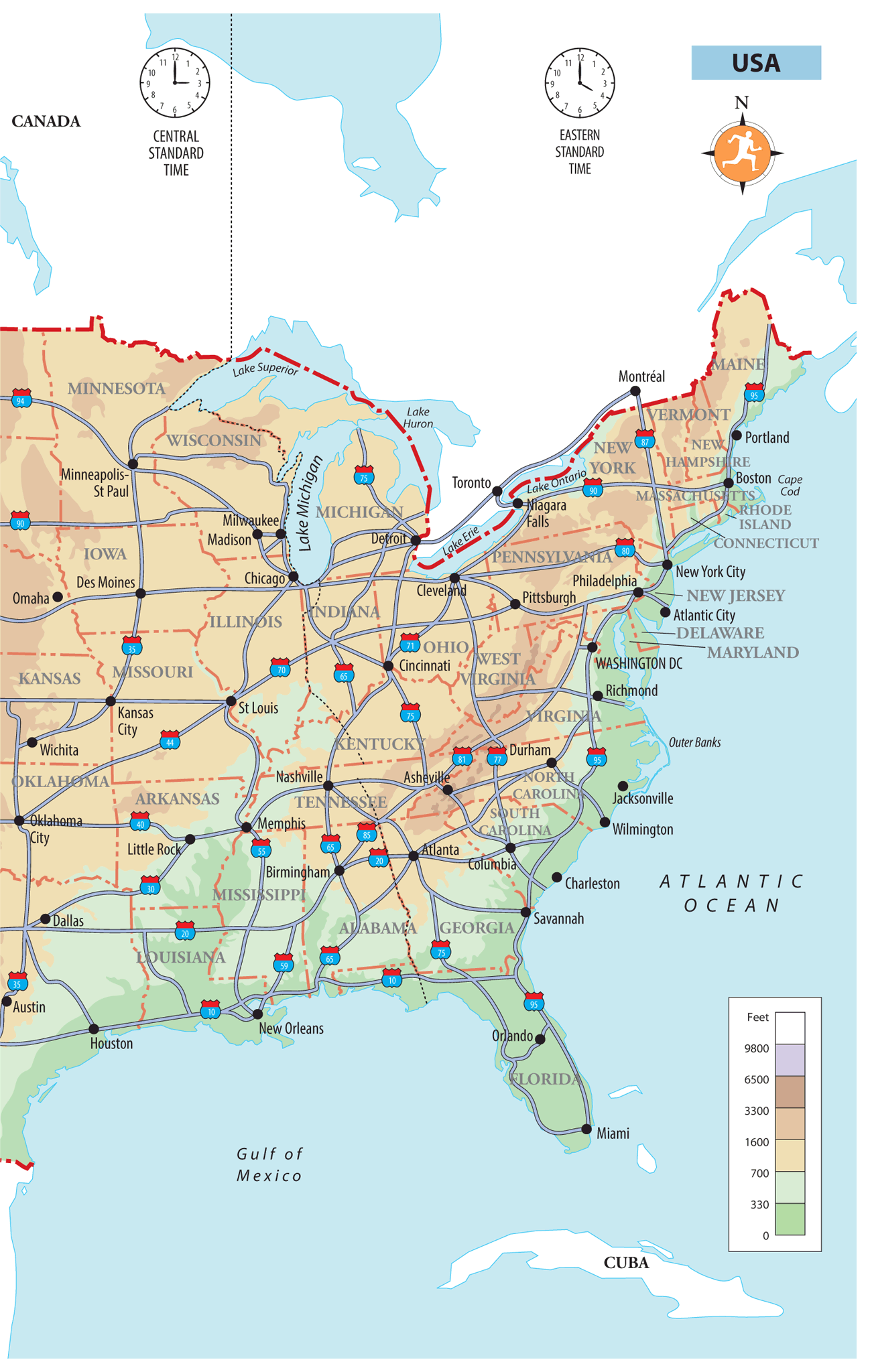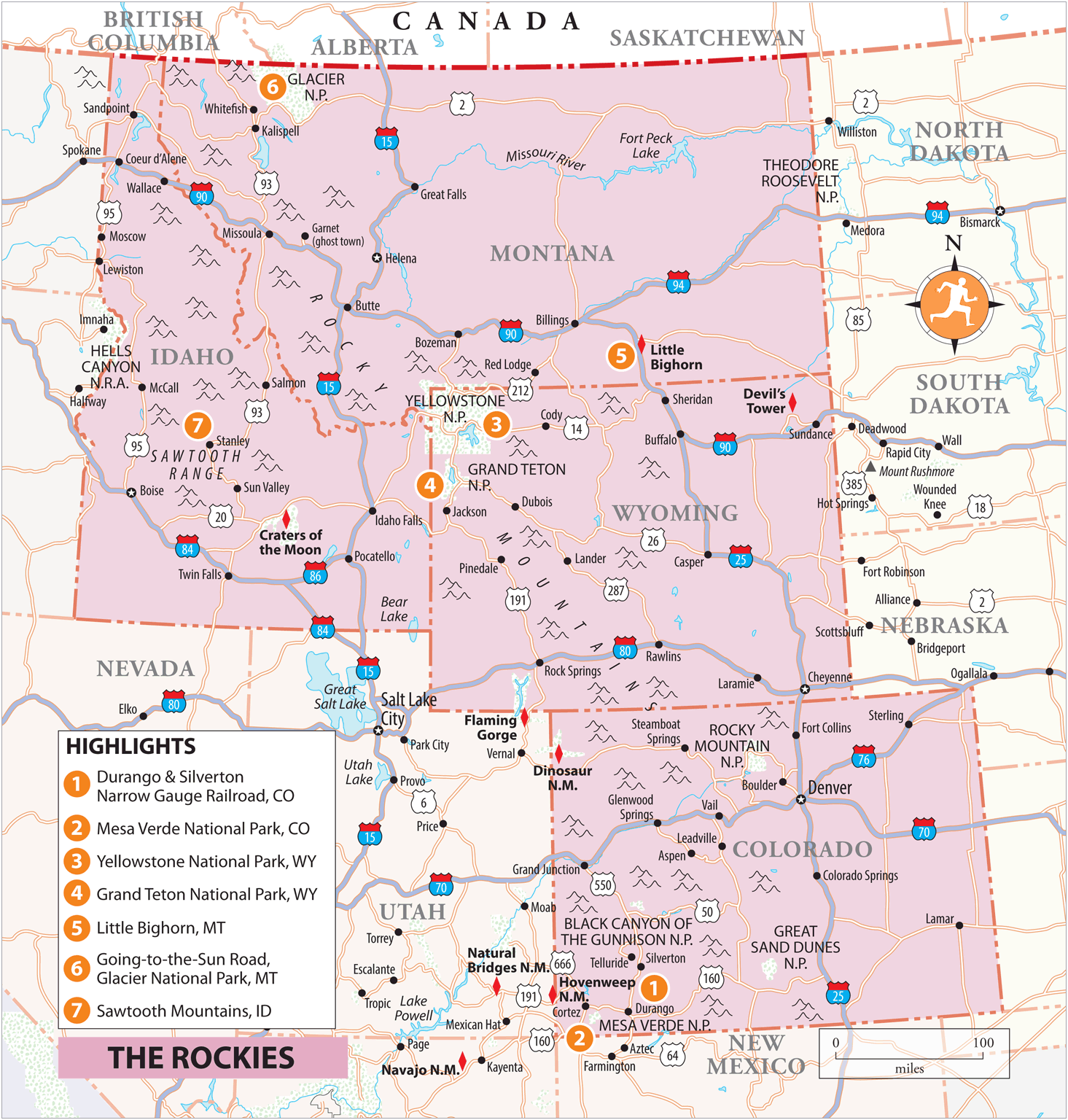INTRODUCTION TO THE ROCKIES
Only when you traverse the Rocky Mountain states of Colorado, Wyoming, Montana and Idaho does the immense size of the American West really hit home. Stretching over one thousand miles from the virgin forests on the Canadian border to the deserts of New Mexico, Americas rugged spine encompasses an astonishing array of landscapes geyser basins, lava flows, arid valleys and huge sand dunes each in its own way as dramatic as the regions magnificent snow-capped peaks. All that geological grandeur is enhanced by wildlife such as bison, bear, moose and elk, and the conspicuous legacy of the miners, cowboys, outlaws and Native Americans who struggled over the areas rich resources during the nineteenth century.
Each of the four states has its own distinct character. Colorado , with fifty peaks over 14,000ft, is the most mountainous and populated, as well as the economic leader of the region with a liberal, progressive reputation. Friendly, sophisticated Denver , the Rockies only major metropolis, is also the most visited city, in part because it serves as gateway to some of the best ski resorts in the country. Less touched by the tourist circus is vast, brawny Montana , where the Big Sky looks down on a glorious verdant manuscript scribbled over with gushing streams, lakes and tiny communities.
Vast stretches of scrubland fill Wyoming , the countrys least populous state, its most conservative and traditionally Western, best known for gurgling, spitting Yellowstone , adjacent Grand Teton National Park and the nearby Bighorn Mountains . Rugged, remote whitewater-rafting hub Idaho holds some of the Rocky Mountains last unexplored wildernesses, most notably the mighty Sawtooth range.
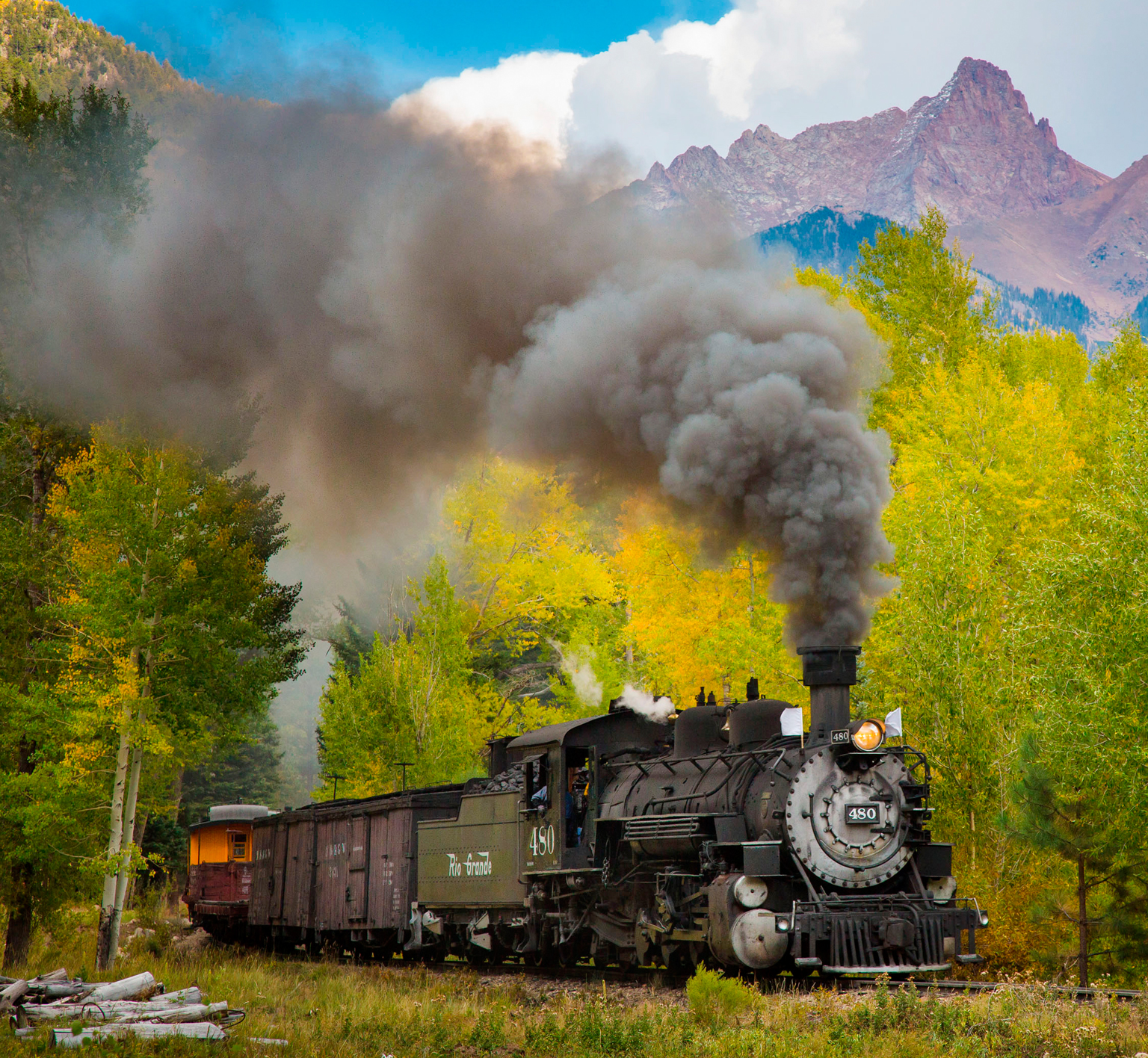
DURANGO & SILVERTON NARROW GAUGE RAILROAD
Highlights
This steam-train ride corkscrews through spectacular mountains to the mining town of Silverton.
Explore the extraordinary cliffside dwellings, abandoned by the Ancestral Puebloans eight hundred years ago.
A thermal wonderland, where wolves and bears prowl, and shaggy bison wander past towering geysers.
This spectacular chain of mountains is prime territory for hiking, biking and wildlife viewing.
One of the most famous battlefields in America looks much as it did in 1876, when Custer faced off against Sitting Bull and Crazy Horse.
The hairpin turns along this fifty-mile stretch offer staggering views near the Continental Divide.
Of all Idahos 81 mountain ranges, the Sawtooth summits make for the most awe-inspiring scenic drive.
For details on getting to the Rockies and travelling across the rest of the USA, as well as information on entry requirements and currency, plus travelling with children, national holidays and sport, turn to the section.
COLORADO
Progressive and increasingly multicultural, COLORADO is the snowboarding, outdoorsy mountain state that produces more beer than any other, gave us South Park in 1997, and in 2012, legalized marijuana its culture is often more Californian than cowboy, albeit without the ocean. Yet Colorado remains proud of its traditional Western roots, and its not all mountains; a third of the state is covered by plains as flat as Nebraska, and in the south the dry, desert terrain resembles New Mexico. And its only liberal to a point; parts are still very conservative, and it was here that horrific mass shootings took place in Columbine (1999) and Aurora (2012).
Beyond the trendy capital Denver , the obvious attraction for travellers are the Rocky Mountains, littered with ski resorts such as Aspen that double as hiking and biking nirvanas in the summer, and with old silver towns like Leadville and Crested Butte . The most spectacular terrain and wildlife is protected within Rocky Mountain National Park and around Pikes Peak , which towers over the states second largest city, Colorado Springs . The far west of the state stretches onto the red-rock deserts of the Colorado Plateau, where the dry climate has preserved the extraordinary natural sculptures of Colorado National Monument , while the southwest boasts Mesa Verde National Park , home to remarkable cliff cities left by the ancient Ancestral Puebloans.
WHEN TO VISIT THE ROCKIES
Between early June and early September you can expect temperatures in the high sixties all the way up to a hundred degrees Fahrenheit (2037 Celsius), depending on whether you are in the high desert of Wyoming, the plains of Idaho or the mountains of Colorado. Be prepared for wild variations in the mountains and, of course, the higher you go the colder it gets, especially at night. The altitude is high enough to warrant a period of acclimatization, while the sun at these elevations can be uncomfortably fierce. In fact, parts of Wyoming and Colorado bask in more hours of sunshine per year than San Diego or Miami Beach. Spring, when the snow melts, is the least attractive time to visit, and while the delicate golds of quaking aspen trees light up the mountainsides in early autumn, by October things are generally a bit cold for enjoyable hiking or sports. Most ski runs are open by late November and operate well into March or even June, depending on snow conditions. The coldest month is January, when temperatures below 0F (-17 Celsius) are common.

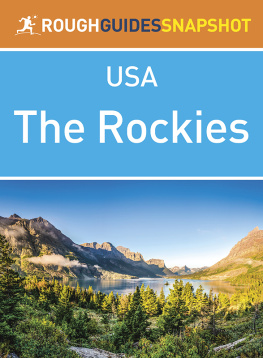

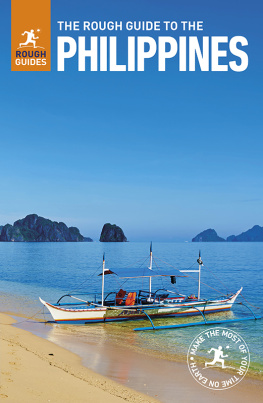
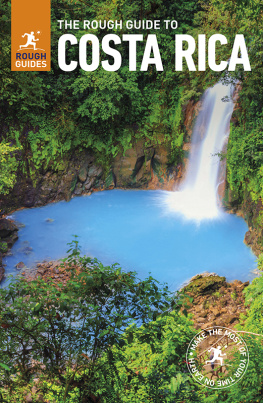


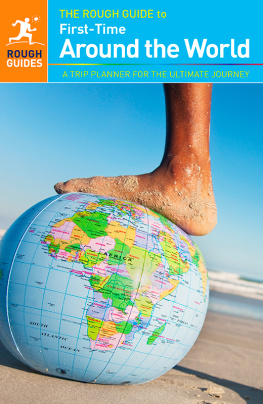

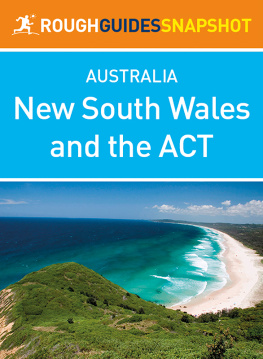
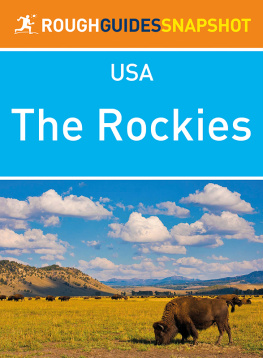

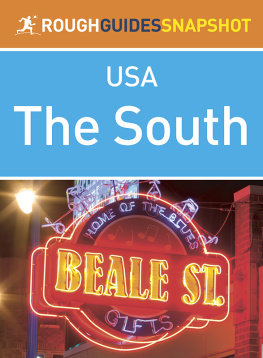

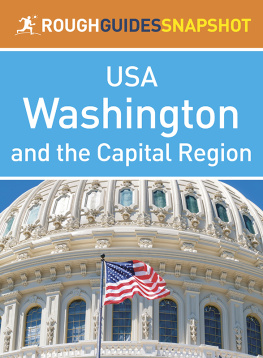
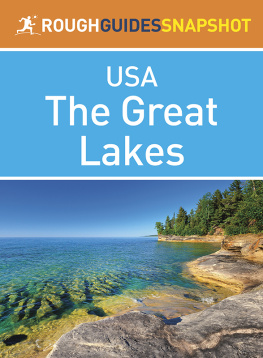
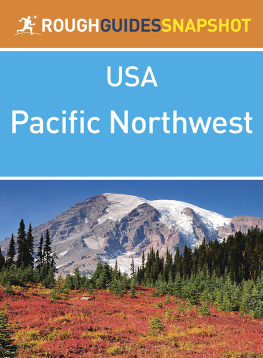
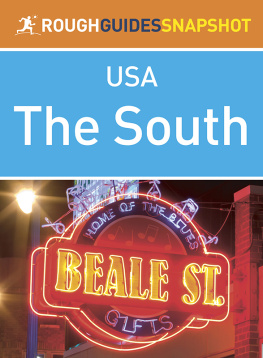
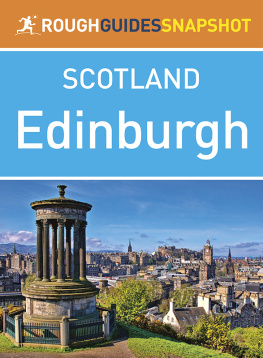

 . You can select your own favourites and create a personalized itinerary by bookmarking the sights, venues and activities that are of interest, giving you the quickest possible access to everything youll need for your time away.
. You can select your own favourites and create a personalized itinerary by bookmarking the sights, venues and activities that are of interest, giving you the quickest possible access to everything youll need for your time away.